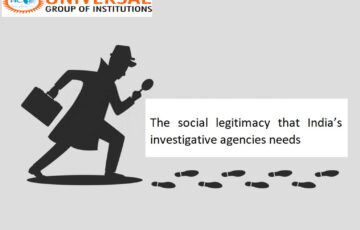Discuss the types of organized crimes. Describe the linkages between terrorists and organised crime that exist at the national and transnational levels.
Introduction
- The term “organised crime” refers to criminal activity carried out repeatedly for financial gain. Examples could include smuggling, money laundering, human trafficking, etc.
- Gang criminality, racketeering, and syndicated crime are the three main subtypes of organised crime.
- The large-scale forms of gang crime include kidnapping, extortion, robbery, and vehicle theft.
- Racketeering is the practise of an organised criminal organisation using coercion or force to collect money from both legal and illegal companies.
- Providing unlawful goods and services by an organised criminal gang, frequently referred to as the “mafia,” is known as syndicated crime.
The existence of organised crime and terrorism is a result of poor leadership and a lack of strong law and order systems in a nation. Through the illegal trafficking of weapons, people, drugs, antiques, and cultural property, organised crime can provide as a source of financial support or logistical assistance for terrorists. However, terrorism can also profit through the illegal trade in natural resources and wildlife, the abuse of legal business practises, donations, and the proceeds of criminal behaviour, such as piracy, extortion, and kidnapping for ransom.
Internationally organised crime rings aim to use legal enterprises as a front for their illicit activities. The crimes committed by organised crime groups become more international as they join ever-complexer global networks, and they have a wider range of crime types at their disposal.
In conclusion, the complementary character of the nexus must be dissected in order to more effectively address each component separately. enhancing collaboration and creating specialist groups to look into. Resolutions passed by the UNSC and other institutional organisations like the FATF can lead to international collaboration.








